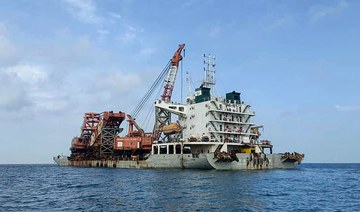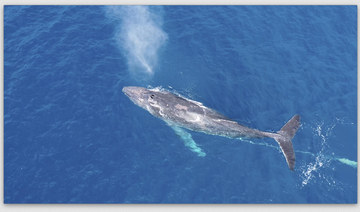DUBAI: Emirates has confirmed that the American actress Jennifer Aniston is the new face of the airline, but would not comment on how much the endorsement was worth to the star or when her advertising campaign would be revealed.
Boutros Boutros, the airline’s divisional SVP for corporate communications, marketing and brand, said in a statement: “We can confirm that we are working with Ms Jennifer Aniston on a global digital and television campaign. We do not wish to discuss contract details, and more information about the campaign will be unveiled in due course.”
According to the New York Post, Aniston signed a deal worth $5 million (Dh18 million) and has already shot a high-profile campaign that will splash the 46-year-old star across print, TV and online.
Previous brand ambassadors for the Dubai airline include Portuguese football star Cristiano Ronaldo.
The news follows a similar deal between Nicole Kidman and Abu Dhabi’s Etihad Airways, which signed with the Australian actress its brand ambassador in March.
Aniston is having a good week, having married her long-term partner, the screenwriter and actor Justin Theroux, in a secret ceremony at her Los Angeles mansion on Aug. 5.
The Friends star is currently enjoying her honeymoon in the South Pacific island Bora Bora, alongside celebrity friends Courtney Cox and Jason Bateman.
One of the highest-paid actresses in Hollywood, Aniston has a reported net worth of $150 million.
Aniston new face of Emirates Airlines
Aniston new face of Emirates Airlines

Divers find remains of Finnish WWII plane that was shot down by Moscow with a US diplomat aboard

- A diving and salvage team in Estonia said this week that it had located well-preserved parts and debris from the Junkers Ju 52 plane operated by Finnish airline Aero
- The downing of the civilian plane, named Kaleva, en route from Tallinn to Helsinki happened on June 14, 1940
HELSINKI: The World War II mystery of what happened to a Finnish passenger plane after it was shot down over the Baltic Sea by Soviet bombers appears to finally be solved more than eight decades later.
The plane was carrying American and French diplomatic couriers in June 1940 when it was downed just days before Moscow annexed the Baltic states. All nine people on board the plane were killed, including the two-member Finnish crew and the seven passengers — an American diplomat, two French, two Germans, a Swede and a dual Estonian-Finnish national.
A diving and salvage team in Estonia said this week that it had located well-preserved parts and debris from the Junkers Ju 52 plane operated by Finnish airline Aero, which is now Finnair. It was found off the tiny island of Keri near Estonia’s capital, Tallinn, at a depth of around 70 meters (230 feet).
“Basically, we started from scratch. We took a whole different approach to the search,” said Kaido Peremees, spokesman for the Estonian diving and underwater survey company Tuukritoode OU, explained the group’s success in finding the plane’s remains.
The downing of the civilian plane, named Kaleva, en route from Tallinn to Helsinki happened on June 14, 1940 — just three months after Finland had signed a peace treaty with Moscow following the 1939-40 Winter War.
The news about the fate of the plane was met with disbelief and anger by authorities in Helsinki who were informed that it was shot down by two Soviet DB-3 bombers 10 minutes after taking off from Tallinn’s Ulemiste airport.
“It was unique that a passenger plane was shot down during peacetime on a normal scheduled flight,” said Finnish aviation historian Carl-Fredrik Geust, who has investigated Kaleva’s case since the 1980s.
Finland officially kept silent for years about the details of the aircraft’s destruction, saying publicly only that a “mysterious crash” had taken place over the Baltic Sea, because it didn’t want to provoke Moscow.
Though well documented by books, research and television documentaries, the 84-year-old mystery has intrigued Finns. The case is an essential part of the Nordic country’s complex World War II history and sheds light into its troubled ties with Moscow.
But perhaps more importantly, the downing of the plane happened at a critical time just days before Josef Stalin’s Soviet Union was preparing to annex the three Baltic states, sealing the fate of Estonia, Latvia and Lithuania for the next half-century before they eventually regained independence in 1991.
Moscow occupied Estonia on June 17, 1940 and Kaleva’s doomed journey was the last flight out of Tallinn, though Soviets had already started enforcing a tight transport embargo around the Estonian capital.
American diplomat Henry W. Antheil Jr., who is now considered one of the first US casualties of World War II, was aboard the plane when it went down.
The 27-year-old Antheil, the younger brother of the acclaimed composer and pianist George Antheil, was on a rushed government mission evacuating sensitive diplomatic pouches from US missions in Tallinn and Riga, Latvia. as it had become clear that Moscow was preparing to annex the small Baltic nations.
An Associated Press wire item dated June 15, 1940 noted that “Henry W. Antheil Jr. of Trenton, N. J., attached to the United States Legation in Helsinki, was killed in the mysterious explosion of a Finnish airliner yesterday.” In the US media, Antheil’s death was overshadowed by much bigger news from Europe at the time: the Nazi occupation of Paris.
The US Embassy in Tallinn has thoroughly documented and researched the case over the years.
Embassy spokesman Mike Snyder told the AP that “news of the possible location of the wreck of the Kaleva passenger plane is of great interest to the United States, especially since one of the first US casualties of the Second World War, Diplomat Henry Antheil, occurred as a result of the plane being downed.”
Earlier this month, the US ambassador in Estonia, George P. Kent, shared a post on X that included photos of Antheil, Kaleva and a memorial plaque by the American Foreign Service Association in Washington with Antheil’s name engraved in it.
Kaleva was carrying 227 kilograms (500 pounds) of diplomatic post, including Antheil’s pouches and material from two French diplomatic couriers — identified as Paul Longuet and Frederic Marty.
Estonian fishermen and the lighthouse operator on Keri told Finnish media decades after the downing of the plane that a Soviet submarine surfaced close to Kaleva’s crash site and retrieved floating debris, including document pouches, that had been collected by fishermen from the site.
This has led to conspiracy theories regarding the contents of the pouches and Moscow’s decision to shoot down the plane. It still remains unclear why precisely the Soviet Union decided to down a civilian Finnish passenger plane during peacetime.
“Lots of speculation on the plane’s cargo has been heard over the years,” Geust said. “What was the plane transporting? Many suggest Moscow wanted to prevent sensitive material and documents from exiting Estonia.”
But he said that it could have simply been “a mistake” by the Soviet bomber pilots.
Various attempts to find Kaleva have been recorded since Estonia regained independence more than three decades ago. However, none of them have been successful.
Not even the US Navy’s oceanographic survey vessel Pathfinder could locate remains of the plane in a 2008 search around the Keri island in a venture commissioned by the Estonian government from the Pentagon.
“The wreckage is in pieces and the seabed is quite challenging with rock formations, valleys and hills. It’s very easy to miss” small parts and debris from the aircraft,” Peremees said. “Techniques have, of course, evolved a lot over the time. As always, you can have good technology but be out of luck.”
New video taken by underwater robots from Peremees’ company show clear images of the three-engine Junkers’ landing gear, one of the motors and parts of the wings.
Peremees and his group are “absolutely” convinced the parts belong to Kaleva because of the distinctive and recognizable design of the German-made Junkers Ju 52, one of the most popular European passenger and wartime transport planes in the 1930s and early 1940s.
The plane was operated by the predecessor of the Finnish national airline Finnair.
Jaakko Schildt, chief operations officer of Finnair, described Kaleva’s downing as “a tragic and profoundly sad event for the young airline” that Finnair, then named Aero, was in 1940.
“Finding the wreckage of Kaleva in a way brings closure to this, even though it does not bring back the lives of our customers and crew that were lost,” Schildt said. “The interest toward locating Kaleva in the Baltic Sea speaks of the importance this tragic event has in the aviation history of our region.”
Peremees said his company would now focus on creating 3D images of Kaleva’s debris and discuss with Estonian authorities about the possibility of raising some of the items and, if found, the plane’s cargo and human remains.
Snyder from the US Embassy in Tallinn said that Washington is closely monitoring the diving group’s efforts.
“We are following the investigation of the site and will be happy to discuss with our Finnish and Estonian (NATO) allies any developments resulting from recovery efforts,” Snyder said.
A stone memorial set up in the early 1990s to the victims of the Kaleva crash is located on Keri, and Helsinki’s old preserved Malmi airport terminal building, where Kaleva was supposed to arrive, has a memorial plaque set up in 2020 with the names of the victims.
Alex Jones’ personal assets to be sold to pay $1.5B Sandy Hook debt. Company bankruptcy is dismissed
Alex Jones’ personal assets to be sold to pay $1.5B Sandy Hook debt. Company bankruptcy is dismissed

HOUSTON: A federal judge on Friday ordered the liquidation of conspiracy theorist Alex Jones′ personal assets but dismissed his company’s separate bankruptcy case, leaving the immediate future of his Infowars media platform uncertain as he owes $1.5 billion for his false claims that the Sandy Hook Elementary School shooting was a hoax.
Judge Christopher Lopez approved converting Jones’ proposed personal bankruptcy reorganization to a liquidation. But Lopez threw out the case of his company, Austin, Texas-based Free Speech Systems, after failed attempts by Jones to reach an agreement with Sandy Hook families on his proposals to reorganize and keep operating the company while paying them millions of dollars.
It wasn’t immediately clear what will happen in the coming weeks to Free Speech Systems, Infowars’ parent company, which Jones built into a multimillion-dollar moneymaker over the past 25 years by selling dietary supplements and other products. But both Jones and lawyers for the Sandy Hook families said they expect Infowars to cease operating at some point because of the huge debt.
A trustee appointed Friday in Jones’ personal bankruptcy case to oversee the liquidation now has control over his assets, including Infowars, according to lawyers for Sandy Hook families.
Dismissal of Free Speech Systems’ case means the families can now move immediately to collect on the $1.5 billion in state courts in Texas and Connecticut where they won defamation lawsuits against Jones and the company. It’s possible Infowars will continue operating during the collection efforts, which could include selling off the company’s assets.
Jones, who smiled as the judge dismissed the company’s case, called in to Infowars after the court hearing and predicted more battles in the state courts. “The bizarre political attempts to hijack the operation have failed,” he said, and added that he would find another way to broadcast his shows if he loses Infowars.
Outside the courthouse, he railed about the families not accepting his reorganization proposals and alleged that they were being used by political groups in a conspiracy to silence him. He said he would try to maximize revenues at Infowars to make money for creditors and then wind down the business in a way that takes care of its 44 employees.
“This is about taking me off the air,” Jones said. “Understand that what you’ve seen in the corporate media about me, or what I said about Sandy Hook or any of this, has no bearing on reality.”
Chris Mattei, a lawyer for the Sandy Hook families, called Infowars “soon-to-be defunct” as his clients move to collect on the debt in state courts. He said the families will also pursue Jones’ future earnings.
“Today is a good day,” Mattei said in a text message after the hearing. “Alex Jones has lost ownership of Infowars, the corrupt business he has used for years to attack the Connecticut families and so many others. ... Alex Jones is neither a martyr nor a victim. He is the perpetrator of the worst defamation in American history.”
Lopez had been asked to either convert Free Speech Systems’ bankruptcy reorganization to a liquidation or dismiss the case. He said his sole focus was what would be best for the company and its creditors. He also said Free Speech Systems’ case appeared to be one of the longest running of its kind in the country, and it was approaching a deadline to resolve it.
“I was never asked today to make a decision to shut down a show or not. That was never going to happen today one way or another,” Lopez said. “This case is one of the more difficult cases I’ve had. When you look at it, I think creditors are better served in pursuing their state court rights.”
Many of Jones’ personal assets will be sold off, but his primary home in the Austin area and some other belongings are exempt from bankruptcy liquidation. He already has moved to sell his Texas ranch worth about $2.8 million, a gun collection and other assets to pay debts.
In the lead-up to Friday’s hearing, Jones had been telling his web viewers and radio listeners that Free Speech Systems was on the verge of being shut down because of the bankruptcy. He urged them to download videos from his online archive to preserve them and pointed them to a new website of his father’s company if they want to continue buying the dietary supplements he sells on his show.
Jones has about $9 million in personal assets, according to the most recent financial filings in court. Free Speech Systems has about $6 million in cash on hand and about $1.2 million worth of inventory, according to J. Patrick Magill, the chief restructuring officer appointed by the court to run the company during the bankruptcy.
During Friday’s hearing, lawyers for the Sandy Hook families repeated claims that Jones illegally diverted millions of dollars both before and during the bankruptcies, and questioned his sending his audience to his father’s website. The families have a pending lawsuit in Texas accusing Jones of illegally diverting money, which he denies, and said they will continue efforts to claw it back.
Jones and Free Speech Systems filed for bankruptcy protection in 2022, when relatives of many victims of the 2012 school shooting that killed 20 first graders and six educators in Newtown, Connecticut, won lawsuit judgments of more than $1.4 billion in Connecticut and $49 million in Texas.
The relatives said they were traumatized by Jones’ comments and his followers’ actions. They have testified about being harassed and threatened by Jones’ believers, some of whom confronted the grieving families in person saying the shooting never happened and their children never existed. One parent said someone threatened to dig up his dead son’s grave.
Jones is appealing the judgments in the state courts.
The families in the Connecticut lawsuit, including relatives of eight dead children and adults, had asked that Free Speech Systems’ bankruptcy case also be converted to a liquidation. But the parents in the Texas suit — whose child, 6-year-old Jesse Lewis, died — wanted the company’s case dismissed, saying it would speed up collection of Jones’ debt to them.
Lawyers for the company filed documents indicating it supported liquidation, but attorneys for Jones’ personal bankruptcy case wanted the judge to dismiss the company’s case.
Myriad people flock to Indian city to swallow live fish with ‘miracle cure’ to asthma

- It is said that the fish, stuffed with a secret herbal treatment, travels down the throat and relieves any phlegm or congestion
- The practice enjoys support despite objections from scientific groups and others who say there is no proof behind it, and even call it unsanitary
HYDERABAD, India: A mother encourages her daughter to fully open her mouth to swallow a live fish holding “the medicine” she believes will help cure her child’s asthma, as scores clamor about, gulping down their own fish and hoping for the best.
Each summer, on a day deemed auspicious by astrological calculations, people suffering from asthma and other respiratory ailments flock to the southern Indian city of Hyderabad to swallow a small live fish with its mouth stuffed with a secret herbal treatment that only one family can craft.
Legend has it that in 1845 a wandering saint presented a secret formula of miracle herbs to Veeranna Goud, a man living in the old city of Hyderabad, and instructed him to give it to asthma patients for free. Since then, Goud’s descendants, known as the Bathini family, have preserved the tradition and kept the herbal formula under wraps, shared only among male descendants.
“My great-great-grandfather, Veeranna Goud, passed this secret formula to his sons and they passed it on to their sons and now we are the fifth generation to keep the tradition,” said Kakarna Alkananda, who helps oversee the distribution, though she is not privy to the formula.
It is said that the fish travels down the throat and relieves any phlegm or congestion.
“My mother has been taking this treatment for seven years now, and it has brought her much relief. She’s breathing easier, and her attacks have become less frequent,” said Aash Mohammed, who traveled for more than 20 hours by train from the Indian capital New Delhi with his family.
The Bathini family has to call the treatment “prasadam” which roughly translates as “an offering” after a local organization that works to dispel superstitious beliefs won a lawsuit forbidding them from describing the treatment as “medicinal.”
Still, the practice enjoys support despite objections from scientific groups and others who say there is no proof behind it, and even call it unsanitary.
People buy their fish from the government fisheries department stall on site. Though the treatment is free, each fish costs 40 rupees or about 50 cents. After collecting the live fish in a plastic bag filled with water, each person gives it to an attendant working with the Bathini family, who squeezes a yellow herbal paste in the fish’s mouth and helps them swallow it.
Thousands have used the “prasadam” this year, according to organizers.
The local government sets up the makeshift structure for the event while overseeing security and sanitation measures.
New research explores how a short trip to space affects the human body

- Research on four space tourists is included in a series of studies on the health effects of space travel, down to the molecular level
DALLAS: Space tourists experience some of the same body changes as astronauts who spend months in orbit, according to new studies published Tuesday.
Those shifts mostly returned to normal once the amateurs returned to Earth, researchers reported.
Research on four space tourists is included in a series of studies on the health effects of space travel, down to the molecular level. The findings paint a clearer picture of how people — who don’t undergo years of astronaut training — adapt to weightlessness and space radiation, the researchers said.
“This will allow us to be better prepared when we’re sending humans into space for whatever reason,” said Allen Liu, a mechanical engineering professor at the University of Michigan who was not involved with the research.

NASA and others have long studied the toll of space travel on astronauts, including yearlong residents of the International Space Station, but there’s been less attention on space tourists. The first tourist visit to the space station was in 2001, and opportunities for private space travel have expanded in recent years.
A three-day chartered flight in 2021 gave researchers the chance to examine how quickly the body reacts and adapts to spaceflight, said Susan Bailey, a radiation expert at Colorado State University who took part in the research.
While in space, the four passengers on the SpaceX flight, dubbed Inspiration4, collected samples of blood, saliva, skin and more. Researchers analyzed the samples and found wide-ranging shifts in cells and changes to the immune system. Most of these shifts stabilized in the months after the four returned home, and the researchers found that the short-term spaceflight didn’t pose significant health risks.
“This is the first time we’ve had a cell-by-cell examination of a crew when they go to space,” said researcher and co-author Chris Mason with Weill Cornell Medicine.
The papers, which were published Tuesday in Nature journals and are now part of a database, include the impact of spaceflight on the skin, kidneys and immune system. The results could help researchers find ways to counteract the negative effects of space travel, said Afshin Beheshti, a researcher with the Blue Marble Space Institute of Science who took part in the work.
Russia races to save entangled humpback whale in the Arctic

- Video shot by a marine biologist shows the whale with some sort of net and rope wrapped tightly around its body near the flippers
MOSCOW: Russian marine specialists are racing to save a humpback whale which has become entangled in a fishing net north of the Arctic circle.
Video shot by a marine biologist shows the whale, who has been named Stanislav, with some sort of net and rope wrapped tightly around its body near the flippers.
After tourists on the Kola Peninsula, in Russia’s far north, spotted the stricken mammal, biologists searched over 120 km (75 miles) of coastline before identifying it, according to Svetlana Radionova, head of Russia’s natural resources watchdog Rosprirodnadzor.
“The whale entangled in the nets has been found alive,” Radionova said on Telegram, adding that specialists would try to get close to it and cut off the net.


















